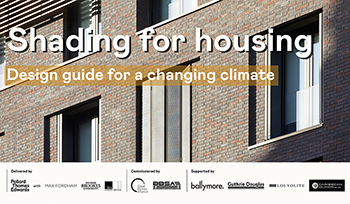Weathertight
One of the fundamental purposes of most buildings is to provide shelter for their occupants. The word weathertight (or weather tight) refers to an enclosure such as a building that is sealed so that elements of the weather such as rain, wind and so are not able to adversely penetrate into the interior.
Weathertight is not the same as watertight. Submerged under water, almost all buildings would fail. Generally buildings are actually modifiers of weather (or climate) rather than totally sealed against it, as they may reject, or partially reject some aspects, while allowing others to penetrate, or partially penetrate into the interior. For example, while a building may need to achieve a certain degree of air-tightness, it must also allow adequate fresh air into the interior to allow people to breath, dilute odours, moderate humidity and reduce the accumulation of bacteria, dust, smoke and other contaminants. Buildings will also typically allow daylight to enter so that the use of artificial lighting can be minimised.
Very broadly, the environmental conditions that the fabric of a building might be required to modify include:
- Air temperature.
- Air movement.
- Humidity.
- Air quality.
- Noise.
- Solar radiation.
- Long wave infra red radiation.
- Visible light.
- Moisture.
Climatic modification is achieved by the external fabric of the building, such as walls, roofs, floors, windows, doors and so on. The extent of modification provided depends on a wide range of factors, including; the materials used, their thickness and form, the way the elements fit together and interact, surface conditions, openings and so on. This can result in very complex constructions, such as cavity walls and rainscreen cladding, and high-performance components such as doors and windows.
Elements such as cavity walls and rainscreen cladding allow air and moisture to partially penetrate into the building fabric, before being drained back to the outside. This can allow the construction of breathable structures that prevent weather from penetrating all the way to the inside, but also allow the release of built up interstitial and internal moisture back to the outside.
If a building is not weathertight it may experience:
- Penetrating damp.
- Flooding.
- Draughts.
- Poor comfort.
- Damage to its fabric and contents.
- Poor performance.
- Mould growth.
Achieving weathertightness is generally an important milestone in the construction of a building as it allows the construction of aspects of the interior that might be damaged by exposure to the weather, such as finishes, electrical equipment and so on.
Increasingly, the building regulations are establishing performance standards for the weathertightness of buildings, with Part F setting standards for air tightness, Part L setting minimum requirements for insulation and so on.
Climate change is likely to place further demands on the weathertightness of buildings as more extreme weather events are likely and the occurrence of extreme weather is likely to become more common.
[edit] Related articles on Designing Buildings Wiki
Featured articles and news
Editor's broadbrush view on forms of electrical heating in context.
The pace of heating change; BSRIA market intelligence
Electric Dreams, Boiler Realities.
New President of ECA announced
Ruth Devine MBE becomes the 112th President of the Electrical Contractors Association.
New CIAT Professional Standards Competency Framework
Supercedes the 2019 Professional Standards Framework from 1 May 2025.
Difficult Sites: Architecture Against the Odds
Free exhibition at the RIBA Architecture Gallery until 31 May.
PPN 021: Payment Spot Checks in Public Sub-Contracts
Published following consultation and influence from ECA.
Designing Buildings reaches 20,000 articles
We take a look back at some of the stranger contributions.
Lessons learned from other industries.
The Buildings of the Malting Industry. Book review.
Conserving places with climate resilience in mind.
Combating burnout.
The 5 elements of seiri, seiton, seiso, seiketsu and shitsuke.
Shading for housing, a design guide
A look back at embedding a new culture of shading.
The Architectural Technology Awards
The AT Awards 2025 are open for entries!
ECA Blueprint for Electrification
The 'mosaic of interconnected challenges' and how to deliver the UK’s Transition to Clean Power.
Grenfell Tower Principal Contractor Award notice
Tower repair and maintenance contractor announced as demolition contractor.























